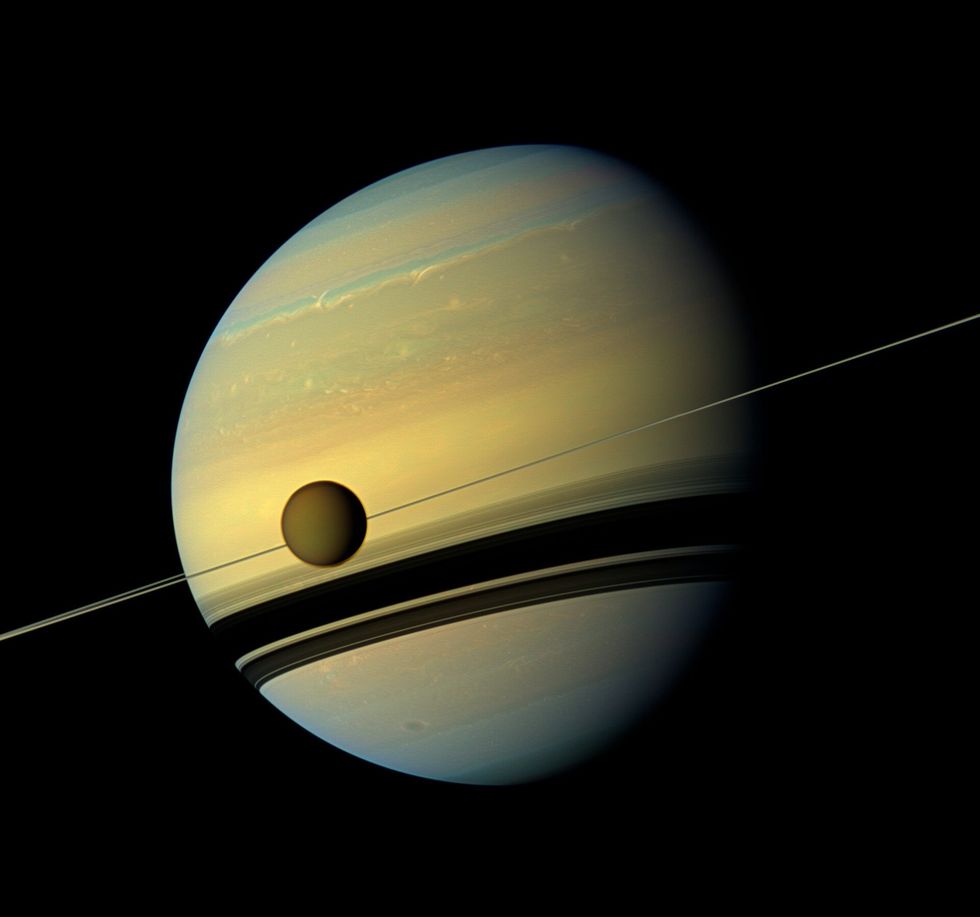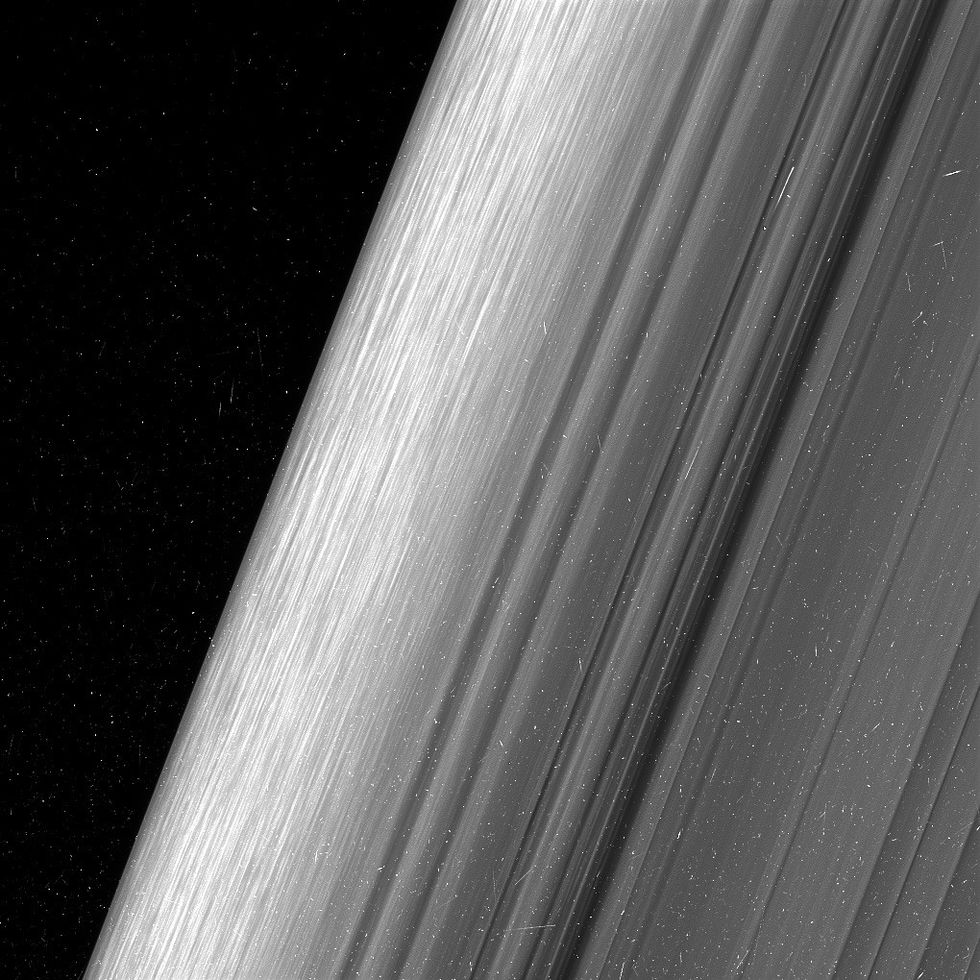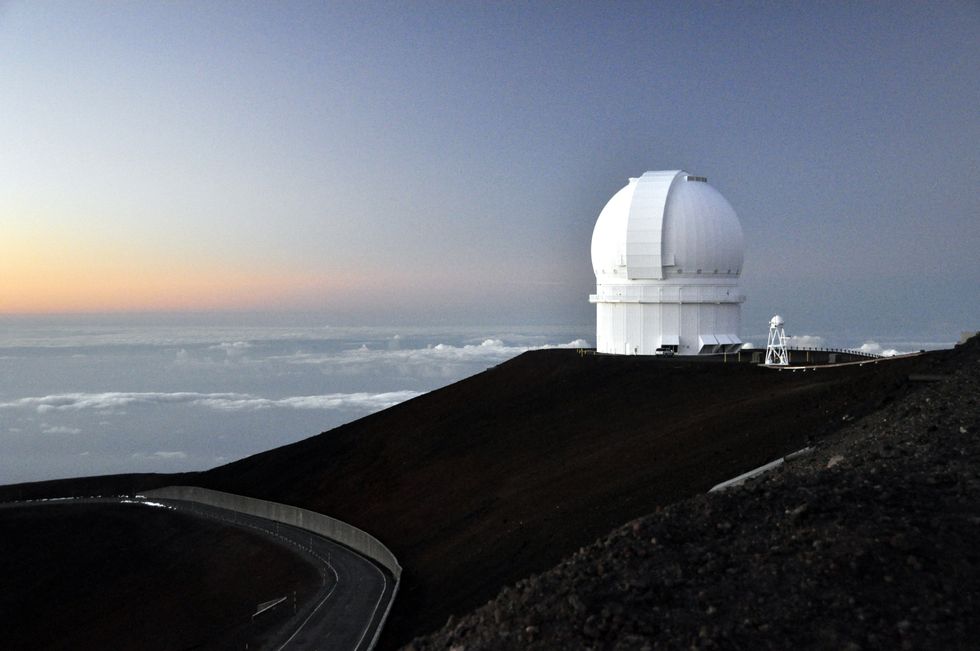WATCH: Donald Trump’s bold plan to ‘return to the moon’ outlined by professor
GB NEWS
The solar system's second-largest planet now boasts more moons than all its neighbours combined
Don't Miss
Most Read
Latest
Saturn has "gained" a staggering 128 new moons in a groundbreaking discovery by astronomers in Taiwan.
The find, made by a team led by Edward Ashton at the country's Academia Sinica, has catapulted the ringed planet to the undisputed title of "moon champion" in our solar system.
After the International Astronomical Union officially recognised the findings, Saturn now boasts a grand total of 274 moons - the most of any planet in our solar system.
This impressive tally means Saturn has more confirmed moons than all other planets combined.
Earth's celestial neighbours collectively have 142 moons, with Jupiter in second place at 95.

Saturn now has more confirmed moons than all other planets combined
NASA
The new batch of moons was discovered by stacking images from the Canada-France-Hawaii telescope.
Some of Saturn's other moons were found during space voyages, like when Voyager 1 captured images that revealed the moon Atlas.
More were spotted during "ring-plane crossings" when Saturn's rings appear edge-on from Earth.
All of the newly-discovered moons are classified as "irregular" moons.
Unlike regular moons, which orbit in circular paths around a planet's equator, irregular moons travel in elliptical orbits at various angles.
Scientists believe these irregular moons were once small planets which were captured by Saturn's gravity and later broken into pieces by collisions.
MORE FROM OUR SOLAR SYSTEM:

A close-up of Saturn's rings - which consist of ice and rock fragments from comets, asteroids and moons
NASA
Saturn and Jupiter have been locked in a "moon race" for years.
In 2019, Saturn took the lead with 82 moons to Jupiter's 79, before Jupiter briefly reclaimed the title in February 2023 with 12 new discoveries.
Later that same year, astronomers found 62 more Saturnian moons, putting the ringed planet firmly ahead.
The new moons are all quite small, measuring only a few kilometres across - however, Nasa maintains that, no matter their size, moons as "naturally formed bodies that orbit planets".
The distinction isn't always clear, as even asteroids can have moons, and Earth has had mini-moons just a couple of metres across.
Saturn's irregular moons also provide valuable insights into how the planet's famous rings formed.
LATEST SPACE NEWS:

The new batch of moons was discovered by stacking images captured by the Canada-France-Hawaii telescope (pictured)
WIKIMEDIA COMMONS
Scientists believe Saturn's rings consist of ice and rock fragments from comets, asteroids and moons torn apart by the planet's gravity.
By studying these irregular moons, astronomers can uncover clues about the formation and evolution of our solar system.
The naming of astronomical objects is governed by the International Astronomical Union.
Saturn's moons traditionally receive names from Greco-Roman mythology, later expanded to include giants and gods from other mythologies.
The 128 new moons currently have technical designations like "S/2020 S 27" while awaiting proper names.
Discoverers get to suggest names, which are given priority by the IAU.













